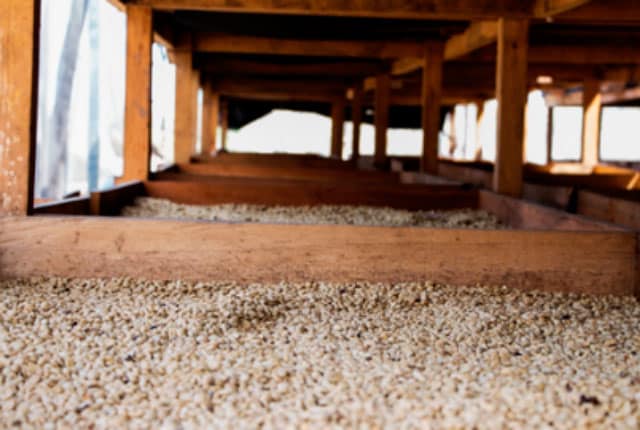
Over time, many terms have been created and adapted to meet the needs and expectations of the specialty coffee industry. One of these terms is micro lot, which is used by many members of the coffee industry to refer to small, exclusive, and traceable lots of coffee. However, there’s still some confusion as to what exactly defines the term.
Over time, many terms have been created and adapted to meet the needs and expectations of the specialty coffee industry. One of these terms is micro lot, which is used by many members of the coffee industry to refer to small, exclusive, and traceable lots of coffee. However, there’s still some confusion as to what exactly defines the term.
For a micro lot to have value for everyone in the coffee supply chain, the term needs to have a definition that everyone agrees on. However, opinions on what a micro lot is tend to differ from person to person. Here’s why there’s so much confusion, and how producers, roasters, and traders can use the term responsibly.
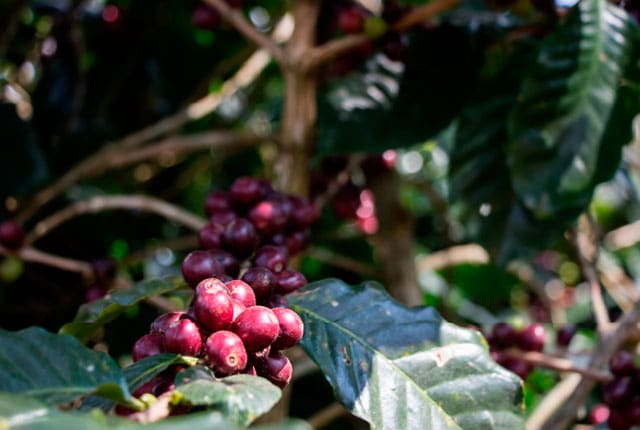
A select volume of coffee from a small farm lot can be labelled as micro lot.
What Is a Micro Lot?
Micro lot has become a popular term amongst many third wave producers, buyers, and sellers. This wave is characterised by a recognition of the importance of sustainably produced, quality coffee that’s been processed with care and provides customers with a unique experience. For this reason, using the term micro lot can offer producers several benefits in theory.
These days, consumers are increasingly requesting details on the altitude, climate, and processing methods involved in producing the coffee they drink. As these variables can vary within a region or farm, the micro lot label could help producers prove that their coffee is traceable and distinctive.
Focusing on micro lots can also help producers ensure that their coffees are more carefully sorted and processed. Jolene Zehnder is Director of Sales and Operations at Novus Coffee Imports, a specialty green coffee supplier in Washington, USA. She says that by breaking up a larger lot into smaller lots, it will be easier for producers to differentiate between their coffees. This could help them identify smaller lots that are of higher quality, that could fetch higher prices per pound on average. However, she adds that this process can be complex and create more opportunity for mistakes.
In addition, the label could assist producers in facilitating long term relationships with buyers, as any feedback that the buyers provide on improving the coffee’s quality can be more easily implemented on a smaller lot.
The benefits that producers enjoy from using the micro lot label can be passed to green coffee buyers. Traceable, distinct, and quality coffee usually fetches premium prices from roasters and the customers. However, a lack of clarity on what exactly a micro lot is could keep all members of the supply chain from benefiting from its use.
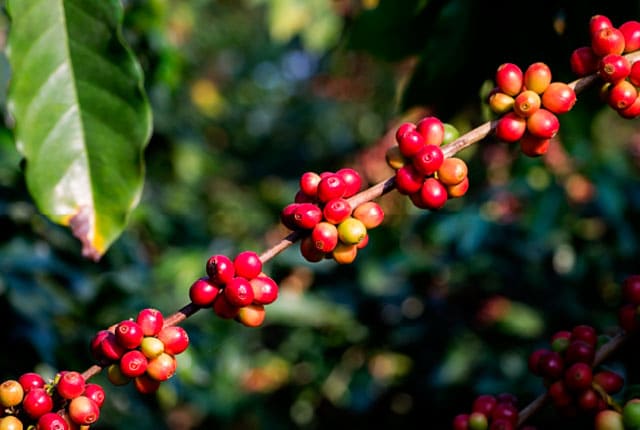
Cherries that are harvested and labelled as micro lots can benefit producers.
Why Do Multiple Definitions Exist?
It’s apparent that different people in the coffee supply chain have unique ideas of what a micro lot is – and that their definitions could involve different production volumes, cupping scores, lot and farm sizes, and prices per pound. Because there’s so little clarity on the definition of a micro lot, each member of the supply chain could have an entirely different understanding of what it means.
Steven Schreiber is the Co-Founder of Two Rivers Coffee in New York and says that a micro lot’s definition often “depends [on] who is selling it and how they want to market it. Different farms, brokers, and agents will all describe their offerings based on their understanding of the term. Many things also get lost in translation through language barriers and their need to make a living.”
For those trading coffee, the term is often used to distinguish a small volume of coffee that hasn’t been mixed with other lots. Peter Gakuo is a Quality Assurance Specialist based in Kenya and says that “this term is used by coffee dealers and traders. When they intend to sell some of the coffee in their stock lot, if a certain lot isn’t bulked with any other coffee, they refer to it as a micro lot, because it’s ‘pure’… But it’s not indicative of quality and it doesn’t have to be small. Micro means single in this case.”
For producers, the term often describes a small lot of a single coffee variety that comes from one area and has been processed together. Dylan Cummings is Managing Director of Beaver Creek Coffee Estate in Port Edward, South Africa says it’s “the smallest divisible collection of coffee (unbulked). Same farm, plantation, day of harvest, cultivar, [and] process, processed together as one lot… Due to farm size, the quantity of coffee harvested in a single day, fermentation tank size, grading etc. this would typically be a small lot… This is arguably the definition of micro lot, any other use of the word is typically used as a marketing term. Micro lot is not a quality indicator.”
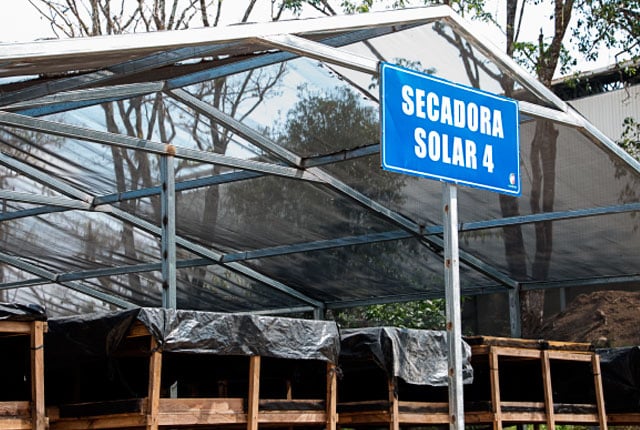
Coffees labelled as micro lot are often dried and processed separately from the rest.
Definitions of what a micro lot is can also differ from producer to producer. As a Green Coffee Buyer, Sam MacCuaig from Clifton Coffee Roasters in Bristol, UK has witnessed multiple definitions being employed. He says that while some producers use the term to describe all the coffee from a single lot, others use it to describe all the lots a washing station has processed on a certain day. He says that, “Ultimately, as with all things coffee, it seems very fluid and open to interpretation and/or marketing manipulation.”
Some producers use the term to market their coffee to roasters by using it to describe coffee that’s been carefully monitored throughout its production and processing stages – so that the final cup profile can be more controlled and repeatable. Often roasters won’t check to see why a coffee lot has been described this way or to verify the information accompanying it. They will then remarket it as micro lot, passing the coffee down the supply chain.
For some roasters, a micro lot could be defined according to how much coffee they’re capable of roasting in a single day or a select lot of coffee roasted in a single session, which could vary depending on the size of their operations. This often takes place when a roaster is trying to increase their profit margins – such as when they purchase a large lot of coffee, subdivide it into smaller lots, and remarket it as distinct lots.
Black Drum Roasters operate a roastery in New South Wales, Australia. According to their website, a micro lot can be associated with quality and small farmers who take good care of their crops. However, they explain that the term isn’t as simple as it sounds, as it doesn’t explain how big or small the lot is in terms of bags, whether it involves coffee from one farm or many, or whether the coffee has been processed where it’s grown or in a separate facility. They personally use the term to describe single origin coffee milled and washed in one batch, resulting in an individual selection with flavours that are characteristic of the region.

Different producers will have different definitions of what a micro lot of coffee actually is.
The Micro Lot Label in Other Industries
Wine has been produced on a large scale from 6,000 B.C. and in 2019, global wine production reached an estimated 269 million hectolitres. In recent years, there’s been a return to small scale production of limited release, quality, artisanal wines as an alternative to mass-produced, homogeneous wines. These wines usually come from a select group of vines that grow on a particular estate that are differentiated, marketed, and sold differently.
Often these wines are too time-consuming and costly to produce on a large scale. In addition, their smaller size of production allows producers to remain involved and in control of the process from vine to bottle, creating what some refer to as a micro lot wine.
For example, the Cuvaison Winery in California’s Napa Valley produces a range of micro lot wines and describes them as “micro-production rarities [that] are an exploration in styles and winemaking techniques.” Nottingham Cellars in Livermore, California work with vineyard partners that produce low yield, high-quality grapes to create a wine that reflects its origins. Their wines are then “fermented and aged in micro lots”. Verité Wines in Sonoma Country, California does something similar, by harvesting and fermenting each micro-cru (or micro vineyard) separately, before ageing it in various barrels of custom toasts.
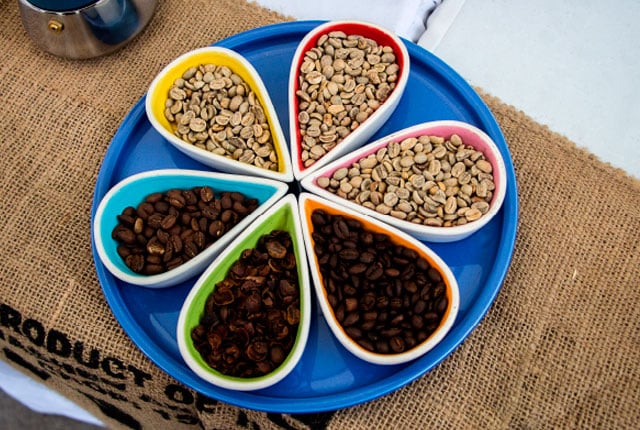
Coffees labelled as micro lots are often sampled and cupped before sale.
As time passes, the practice of defining certain specialty products using the term micro lot could expand to other industries. For example, the term has been adopted by the fine cacao and bean-to-bar sector. The term’s adoption could be due to rising consumer demand for single origin chocolates that are traceable and have been produced in their country of origin.
Some of those fine cacao chocolate products have been differentiated according to their characteristics (such as the cacao’s variety or flavour profile) or value addition (how the cacao has been produced and documented). For example, a micro lot of cacao beans might be fermented in different ways or combined with additives to create a craft chocolate bar.
For example, Meridian Cacao Company, a direct trade cacao supplier based in Portland, Oregon, has undertaken a Trinidad Microlot Project consisting of several estates that each produce cacao with different flavour profiles. Their La Reunion Estate produces cacao with tasting notes of s’mores and passion fruit, while cacao from their Ramnath Estate boasts tasting notes of pineapple, hazelnut, and tobacco.
The Amazing Cacao Company from St Petersburg, Russia, produces a bean-to-bar chocolate range. It includes premium dark chocolate manufactured with Kemito Ene Micro Lot cacao beans from a Perivuan cacao variety. Ingemann Fine Cocoa, a fine cacao supplier based in Nicaragua, also offers buyers cacao with distinct flavour profiles. For example, their Nugu Micro Lot has flavours of roses, jasmine, herbs, vanilla, and yoghurt.
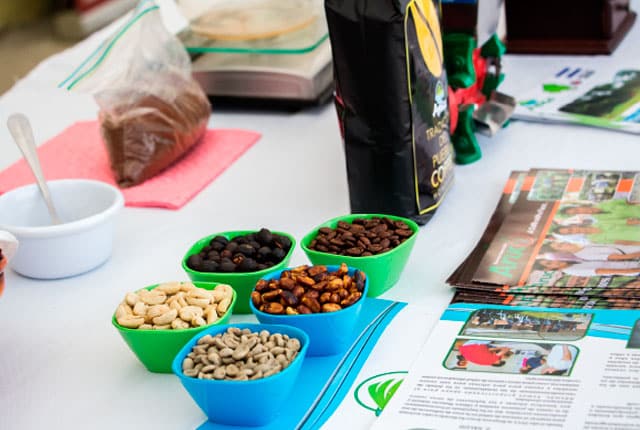
Many coffees are differentiated and marketed uniquely as micro lots.
Using The Term Responsibly
The coffee supply chain is vast and involves millions of producers, roasters, and traders, which means that narrowing down a single universal definition of what a micro lot is will be difficult – and not always possible in certain circumstances.
For example, a green coffee buyer who associates the term with quality may expect the producer who’s supplying them with a micro lot to provide them with a high scoring coffee. However, the producer might be describing their coffee as a micro lot because it’s traceable and accompanied by detailed processing and production information. In this situation, both parties will be disappointed, as the coffee might not fetch as high a price as anticipated for both the producer and the buyer.
Justin Dena is the Chief Operating Officer at iFinca, a business that has created an application that tracks and verifies all purchases made in the coffee supply chain from farmer to consumer. He acknowledges that a lack of clarity exists when it comes to defining a micro lot as it’s “a living term that continues to evolve with new technologies and different ways to connect with producers.”
He suggests that with new technologies “micro lot traceability and transparency can be accessed on every lot of coffee and more detailed information [can be] added to every micro lot. This new connectivity will help to differentiate coffee products and continue the evolution of the industry.”
While the introduction of new technologies such as blockchain could make it easier for coffee supply chain members to transparently record and trace information accompanying a coffee lot – it won’t be enough to address the issues caused by a lack of clarity on what the term micro lot means. As other industries (such as cacao) continue to adopt the term, the term will continue to be adapted and used. And as the specialty coffee industry continues to grow, the term will keep being adapted by those who stand to benefit from it.
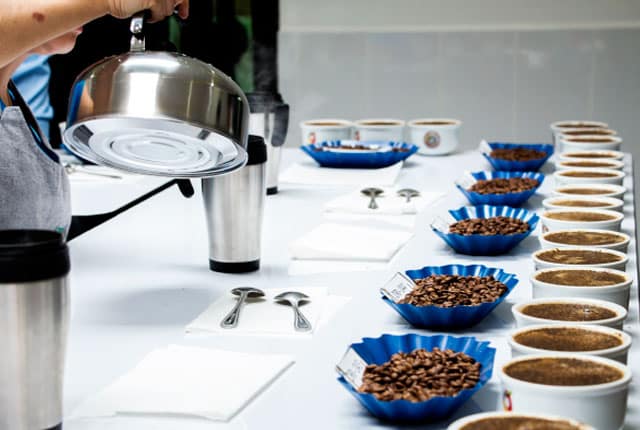
Cupping can help determine whether a micro lot meets quality expectations.
Until the term micro lot becomes regulated, it’s meaning will continue to change according to the person using it.
For the term to be more valuable for those who use it, an accessible and common industry definition needs to be developed. This would include specific details such as the weight and size of the lot in question.
Neil Oney is the Green Coffee Quality Specialist at Novus Coffee Imports. He suggests that “Ideally, there would be some sort of clarifying term to go with it: 100 bag micro lot, 10 bag micro lot, single estate micro lot, elevation separation micro lot, single variety micro lot, etc.”
When this happens, the next question that will need addressing is whether or not the term will be primarily associated with quality, size, or traceability. Once this has been decided, much of the uncertainty surrounding the term should disappear.
Written by Janice Kanniah. Featured photo caption: Describing a coffee as micro lot can have implications for producers and those who buy their coffee.
Original article posted by Perfectdailygrind : https://www.perfectdailygrind.com
